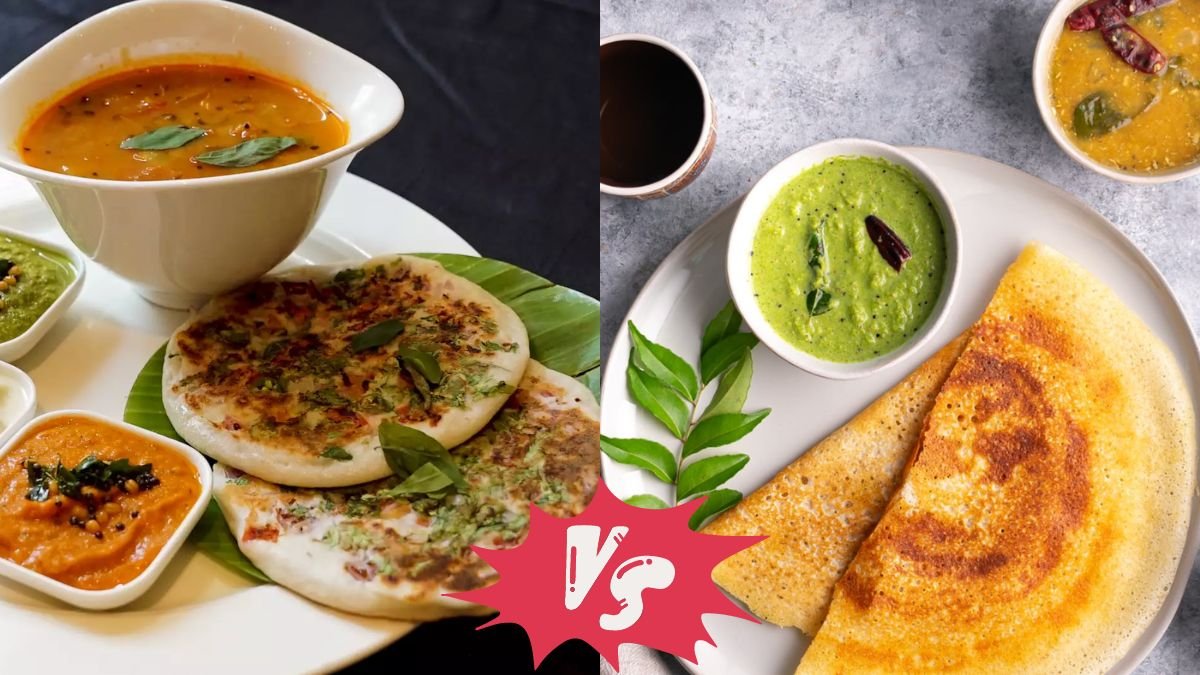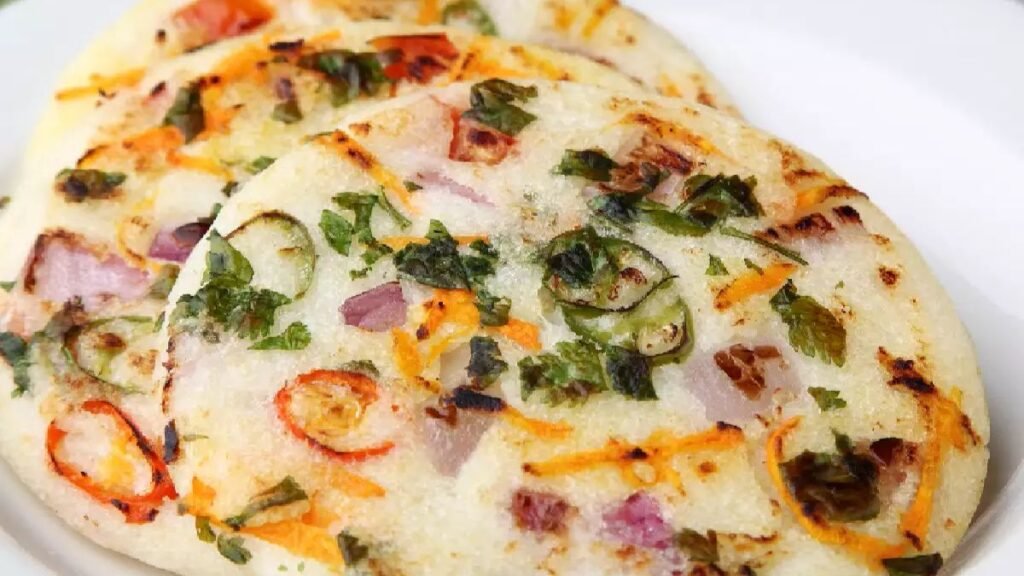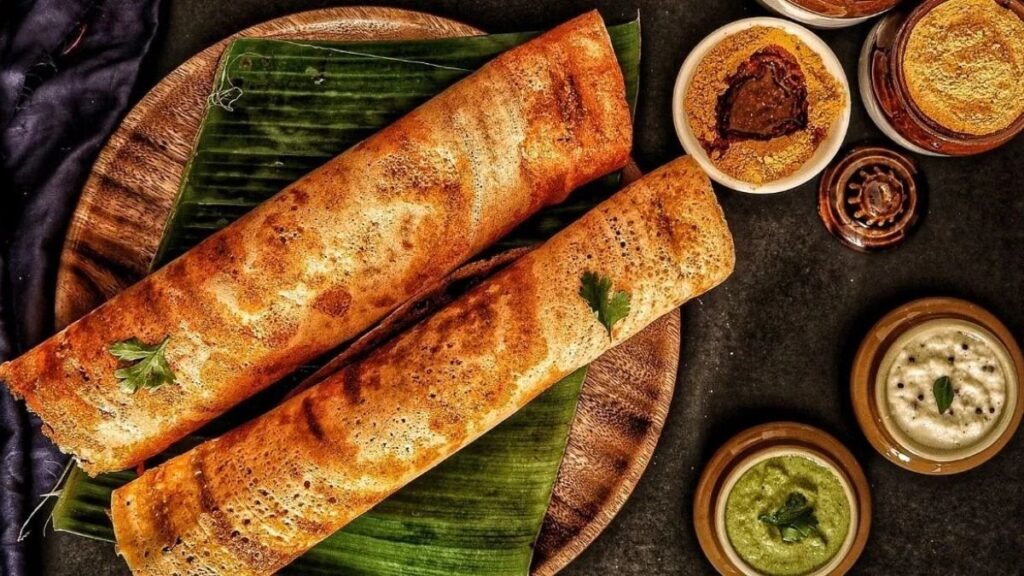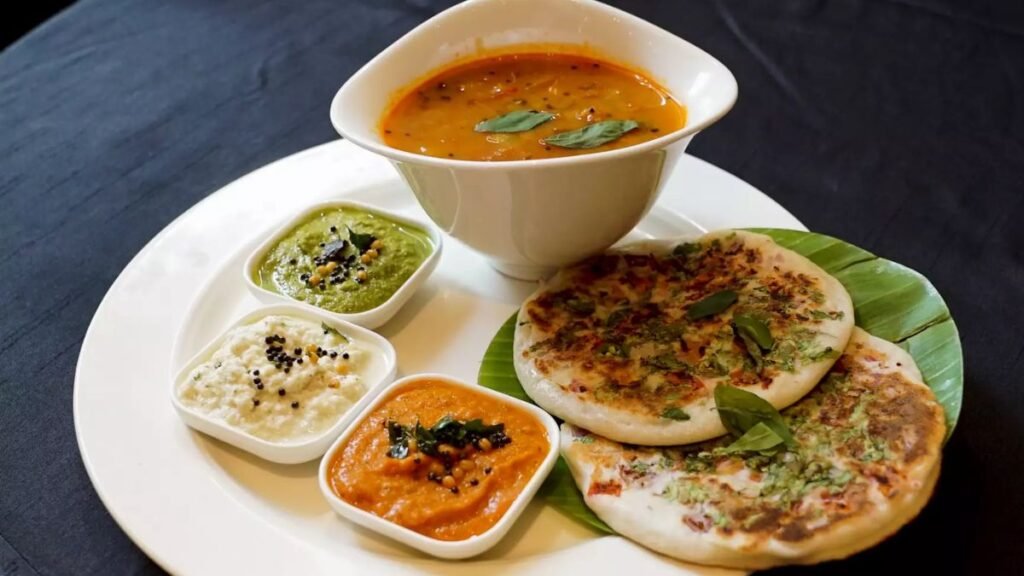Dosa Vs Uttapam: Key Differences Between These Best South Indian Dishes
When it comes to Indian food, nothing can beat the classic combination of dosas and uttapams. Both are staples of South Indian cuisine and are beloved by people of all ages. But what is the difference between the two delicious dishes?
Dosa vs Uttapam

- What is Dosa:
Dosa is a type of Indian pancake traditionally made from fermented batter of rice and black lentils. It is a popular breakfast dish in South India and is often served with sambar and chutney. It is a thin, crispy pancake made from a batter of lentils and rice, and is often served with a variety of accompaniments such as chutney, sambar, and other condiments. Dosa can be enjoyed as a snack or a meal, and can be filled with a variety of ingredients to suit individual tastes.
Dosa is a nutritious food that is high in complex carbohydrates and is low in fat. It is also a good source of several vitamins and minerals, including iron, folic acid, potassium, magnesium, and phosphorus. In addition, dosa is a great source of dietary fiber, which helps to keep the digestive system healthy.
Dosa is a versatile dish that can be eaten as either a breakfast dish, snack or a light meal. It can be served plain, stuffed with vegetables or fillings such as potatoes, paneer, or meat, or topped with a variety of condiments. Dosa can also be served with a variety of accompaniments such as chutney, sambar, and other sauces.
Dosa is a delicious and healthy food that is easy to prepare. It can be made in a variety of ways and is a great way to add variety to your diet. Whether you are looking for a quick and easy breakfast, an afternoon snack, or a light meal, dosa is a great choice. - What is Uttapam:
Uttapam is one of the most popular dishes from South Indian cuisine. It is a type of dosa, which is a savory pancake made from a fermented batter of rice and lentils. The batter is spread out over a hot griddle and cooked until it is crisp and golden on both sides.
The dish is usually served with a variety of chutneys and sambar, a South Indian curry. The toppings on the uttapam can vary but commonly include vegetables such as onions, carrots, and tomatoes. The uttapam is a great way to add variety to your meals and is packed with flavor and nutrition.
Uttapam is a great dish for those looking for a nutritious and delicious meal. It is high in fiber, protein, and essential vitamins and minerals. The batter is made with a combination of lentils, which are a great source of plant-based protein. The toppings also add extra nutrition, like vitamins and minerals, to the dish.
Uttapam is also a great option for those with dietary restrictions. It’s made with gluten-free ingredients and can be made vegan with the omission of cheese. It’s also an excellent source of complex carbs, which is great for those looking to maintain healthy blood sugar levels.
Overall, uttapam is a delicious and nutritious South Indian dish that is great for anyone looking to add variety to their diet. It’s a great source of protein, fiber, vitamins, and minerals and can be tailored to fit a variety of dietary needs.

How to make Dosa and Uttapam:
When it comes to cooking, both dosas and uttapams require the same basic process. The batter is made by soaking and grinding together rice, urad dal and fenugreek. The batter is then left to ferment for 8-12 hours.
While dosa is a thin and crispy crepe, uttapam is a thick pancake with toppings. Both these snacks are incredibly versatile, and you can enjoy them with chutneys, sambar, or curries. Here’s how you can make these delicious snacks at home.
To make dosa and uttapam, you will need the following ingredients:
- 2 cups of parboiled rice
- 1 cup of urad dal
- 1 teaspoon of fenugreek seeds
- Salt, to taste
The first step in making dosa and uttapam is to soak the rice and urad dal overnight. Once the rice and dal have been soaked, you can grind them into a paste using a blender. Then, add the fenugreek seeds and salt to the paste and mix it well. Once the batter has been mixed, you can set it aside for 8-10 hours to allow it to ferment.

Once the batter has been fermented, you can begin making the dosa and uttapam. To make the dosa, heat a non-stick pan and pour a ladleful of the batter in the center of the pan. Using a circular motion, spread the batter outwards to form a thin crepe. You can cook the dosa on both sides until it turns a golden brown.

To make the uttapam, pour the batter in the center of the pan and spread it outwards. Then, sprinkle some chopped vegetables and grated cheese on top of the batter. Cook the uttapam on both sides until it turns golden brown.
Enjoy your delicious dosa and uttapam with your favorite chutney, sambar, or curry. This is a great way to start your day with a healthy and tasty breakfast.
In terms of taste, dosa vs uttapam both have a unique flavour, though they are slightly different. Dosas are crisp and slightly tangy, while uttapams have a softer texture and a milder taste. They also have a slightly different visual appearance, with dosas being thinner and lighter in colour than uttapams.
Dosa vs Uttapam (Texture and health benefit)
The biggest difference between the two is their texture. Dosa is thin and crispy, while uttapam is thick and fluffy. The fermentation process used for dosa also adds a slight sourness to the dish, which is absent in uttapam.
In terms of health benefits, both dishes are healthy and nutritious. Dosa is a good source of protein, fiber, and carbohydrates, while uttapam is high in fiber and low in fat. Both dishes are also gluten-free, so they can be enjoyed by people with gluten sensitivities.
Overall, both dosa and uttapam are delicious and nutritious dishes that are perfect for any South Indian meal. While they may seem similar at first glance, they have distinct characteristics that make them unique. So next time you’re in the mood for a South Indian meal, why not try both dishes and decide which one you like best?
